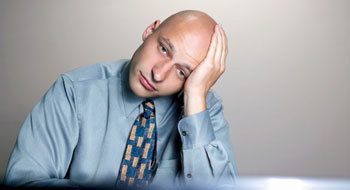

Dubbed “Blue Monday,” January 17 (or the third Monday of January) is supposed to the most depressing day of the year.
The day originated in Europe when a British academic put his name on a mathematical formula (which is said to have first started as a publicity campaign for a travel company) that combined weather, debt, time since Christmas, time since failing our New Year’s Resolutions, low motivational levels, and the feeling of a need to take action.
Dark days, cool weather and holiday bills—the accumulation of things could be making your employees feel a little down in the dumps, but the likelihood that there will be a spike in sick days today is about as likely as it is on any other day.
However, in January overall—and winter months in general—employers may see an increased number of employees calling in sick, as this is the time when those with Seasonal Affective Disorder (SAD) have it worst.
“With the lack of light, people very often feel under the weather specifically during the time when the days are shorter,” explains David Michaels, CEO of the Clinic for Emotional Wellness. “Absences related to mental health would be higher in the workplace in January and February than let’s say June or July.”
It’s obvious that the “science” behind Blue Monday is loosely fabricated but both Michaels and Julie Holden, vice-president of employer services, with Banyan Work Health Solutions Inc. see it as a hallmark to bring more attention to mental health at work.
“It’s an opportunity to bring mental health to the forefront. I don’t think there will be an awful lot more employees calling in sick today, they may be at work though and not be as productive or feeling more down than they normally are,” says Holden. “I think employers should take a look at the wellness initiatives that they have in place and what they are doing to achieve work/life balance.”
Other suggestions from Michaels and Holden include the following:
- ensure office lighting is bright enough (light has been shown to help with SAD);
- provide flexible work hours to allow staff to avoid arriving and leaving work in the dark; and
- allow staff to take more breaks and get outside (if desired).
